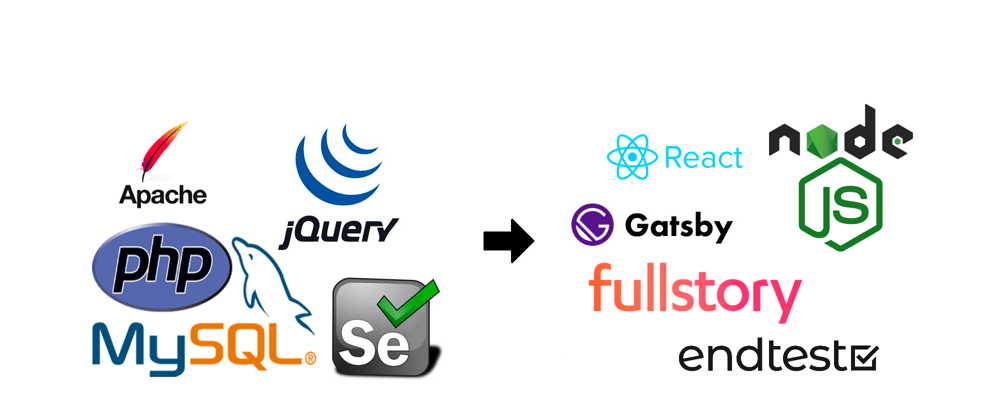One of the perks of working in the same place for the last 10 years is that I got to see how our stack evolved.
| Technologies | 2010 | 2020 |
|---|---|---|
| Frontend | HTML CSS JavaScript jQuery |
HTML5 Sass ReactJS Gatsby |
| Backend | Apache 2.0 PHP 5.3 MySQL 5.1 |
Nginx Node.js MongoDB |
| Infrastructure | Servers in our office |
Amazon Web Services Google Cloud Services |
| Automated Testing | Selenium WebDriver | Endtest |
| Analytics | Google Analytics |
FullStory Amplitude Segment |
In the spotlight:
1. Gatsby ❤️
Gatsby renders your React views to static HTML files that get sent to the client, making the site usable even with JavaScript disabled.
This means that the client does not have to do the heavy lifting of building the site with JavaScript.
This improves SEO and performance, since the site can be rendered much faster on initial load.
2. Endtest ❤️
Endtest allows us to create automated tests in a few minutes and execute them on their cross-browser cloud, without even having to write any code.
It enables us to execute tests on Chrome, Firefox, Safari, Edge, Internet Explorer and mobile browsers.
We have a set of regression tests which are running multiple times each day, giving us the confidence that we're the first ones to find out when something breaks.
3. FullStory ❤️
FullStory records the sessions of our users and allows us to see the replays.
This helps us in discovering potential UX issues before they cost us.
There has been a constant debate if using session recorders is ethical.
We do show it in our list of Subprocessors.
Final thoughts
The overall trend has evolved towards lifting some of the weight off our shoulders.
What about your stack? How has it changed over time?



















